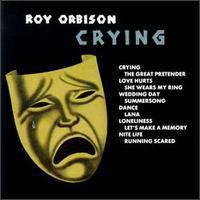Orbison's Crying Cut From Master Tapes
I'm not sure how many Roy Orbison completists are out there. I know two: myself and my friend Frank Doris. Classic has issued Orbison's Crying in both mono and stereo and a good case can be made for either edition, once the case has been made for the music, which is a bit of a more difficult proposition.
This 1962 album, like many from the early '60s, before albums were art, includes some Roy gems like the title track, his version of Boudleaux Bryanat's “Love Hurts,” and “Running Scared,” the greatest paranoid love song ever written. Beyond that though, is lots of filler, much of it larded with so much musical schmaltz, your cholesterol count may go up just from the stuff entering your ears.
The strings, Boots Randolph's sax and the Anita Kerr backup singers, who all work so effectively on the gems, clog the arteries on such blood drainers as “She Wears My Ring,” “Wedding Day,” and many others on this 12 track musical snapshot.
That said, if you listen to a fascinating slice of musical history and not to music out of its original context, there's plenty of musical fun to be had. Like the greased back hair of the day, the tail fins, drive-ins, burgeoning burger stands and rolled up blue jeans, this arrangements seeth with nostalgia and if you're old enough, it will take you back, even as some of the sounds will smother you with high fructose corn syrup.
Some of these arrangements are little different than what Pat Boone sang over, but of course Pat Boone was no Roy Orbison. Even in the most unfortunate of settings, Roy's voice was a magnificent instrument that could elicit chills and thrills.
Even when Roy is singing out and out clunkers like the Ray Charles/”What'd I Say” inspired “Dance,” and the execrable “Lana,” probably “inspired” by Paul Anka's “Diana,” there's something of value trickling through the collapsed musical veins.
Most of side two is so insipid, it sounds as if it was dreamed up in the studio moments before being recorded. And it probably was, which makes the musicianship that much more amazing. Yes, these cats were all veteran studio guys slumming on these sessions, but get past the often turgid arrangements and you'll hear some exuberant live music making, the likes of which hardly exist today-at least in pop/rock.
Classic claims to have unearthed the original masters in Nashville and are using them for the first time here, since the original issues in 1962. I don't doubt it. These sides are the biggest, boldest Roy I've heard yet, and I have mono and stereo Monument originals of everything but Lonely and Blue and In Dreams. These transfers are as “tape-like” as it gets. The sound is somewhat more immediate, dynamic and upfront compared to the same tracks found on S&P's All Time Greatest Hits package also reviewed this month.
While Bill Porter's engineering genius is evident in both the stereo and mono mixes, may I suggest the mono? It's probably the mix Porter lavished the most attention on since it was how most everyone would hear the tunes on the radio at home and in the car, and on the hi-fi. The mono mix is big, bold, dynamic, and as powerful as a classic hemi-powered Chrysler 300.
For completists. The rest of you will want the S&P hits package. That's because you're wusses (that's my inner Roy talking, and he apologizes!)



